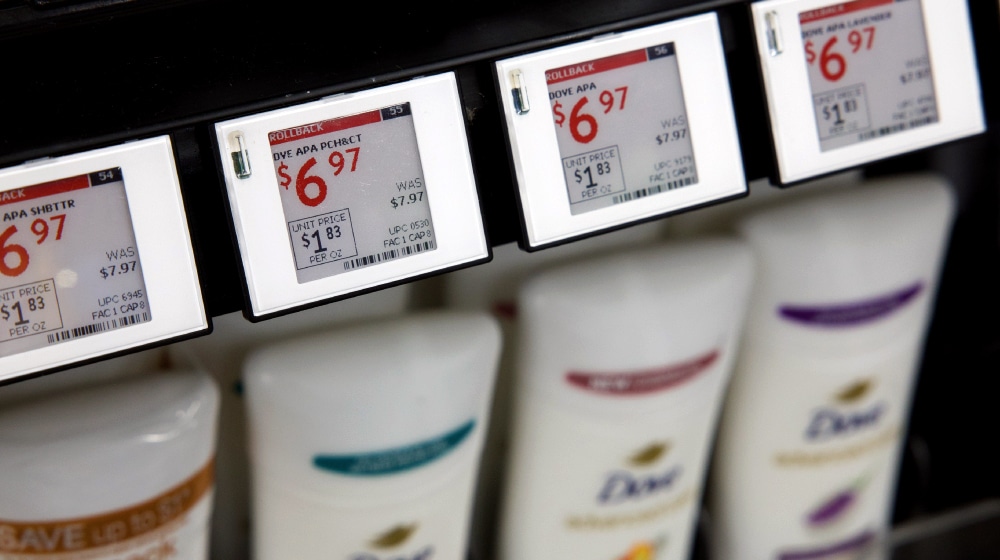
Thousands of Walmart stores are getting a new look soon, one that the retailer says will make its employees more efficient and its shoppers happier. Just keep an eye on how much you’re paying, to make sure the “new look” isn’t also making your wallet emptier.
Following a test at a store in Texas, Walmart has announced plans to introduce digital shelf labels to 2,300 stores – about half of all Walmart locations in the country – within the next two years.
You may have seen the high-tech paper price tag replacements in other stores – Kohl’s, for example, has used them for more than a decade – but this changeover is a first for a retailer of Walmart’s scale. The typical Walmart store has more than 120,000 products on its shelves, the retailer explained in a blog post, and “every week our stores support thousands of pricing updates for new items, Rollbacks and markdowns.”
The electronic tags will allow employees to update prices with a mobile app, “reducing the need to walk around the store to change paper tags by hand” and giving them “more time to support customers in the store.”
The new tags might also allow Walmart to tweak prices more frequently, raising and lowering them in real time whenever they’d like – discounting a product that’s not selling, or charging more for something in high demand. Walmart didn’t mention this possibility in its announcement – but its new price tag supplier has.
Electronic shelf labels “provide retailers with the flexibility to respond swiftly to changing market conditions, customer preferences, and competitive pressures,” the tech company Vusion Group explained in a recent white paper. “This agility enables retailers to optimize prices based on factors such as demand fluctuations, inventory levels, and competitor pricing.”
This would be the dreaded “dynamic pricing,” which some retailers are eager to implement, but at the risk of angering and alienating their customers. Anyone who travels is accustomed to prices that vary based on demand or availability, whether it’s for an Uber ride or a hotel room or a plane ticket. But the concept hasn’t made a smooth transition to retail.
Or restaurants. Wendy’s faced a consumer backlash earlier this year when it announced it would install high-tech digital menu boards into all locations by next year, which would allow the restaurant chain to offer “more enhanced features like dynamic pricing.” After fast-food fans cried foul, concerned that Wendy’s would implement “surge pricing” and charge more during busy times, Wendy’s tried to walk back its earlier comments, insisting that it would “not raise prices when our customers are visiting us most,” and might instead “offer discounts and value offers to our customers more easily, particularly in the slower times of day.”
So whether it’s Wendy’s or Walmart, both seem to prefer emphasizing how electronic pricing displays will allow them to offer deals and lower prices – let’s just not talk about the fact that it’s just as easy to make those prices go up.
For now, Walmart’s announcement doesn’t suggest anything nefarious is in the works. It calls the move “a game-changer” in that it will improve employee efficiency, price accuracy, and sustainability – just think of all the paper and ink that will be saved by not having to print and discard millions of paper price tags across thousands of stores.
“Customers can shop with confidence, knowing they are getting fair and consistent prices,” Vusion says of its product. “This heightened level of satisfaction translates into increased loyalty, as customers are more likely to return to a store where they feel valued and supported.”
That’s a lot to pin on price tags. If you see these new shelf labels at your local Walmart, it will be up to you to decide whether they help you feel valued and supported. Just as long as they don’t leave you with less money in your pocket.
Image source: Walmart















